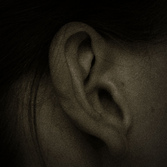- Home
- About Us
- TSPT Academy
- Online Courses
-
Resources
- Newsletter
- Business Minded Sports Physio Podcast
- Day in the Life of a Sports PT
- Residency Corner
-
Special Tests
>
-
Cervical Spine
>
- Alar Ligament Test
- Bakody's Sign
- Cervical Distraction Test
- Cervical Rotation Lateral Flexion Test
- Craniocervical Flexion Test (CCFT)
- Deep Neck Flexor Endurance Test
- Posterior-Anterior Segmental Mobility
- Segmental Mobility
- Sharp-Purser Test
- Spurling's Maneuver
- Transverse Ligament Test
- ULNT - Median
- ULNT - Radial
- ULNT - Ulnar
- Vertebral Artery Test
- Thoracic Spine >
-
Lumbar Spine/Sacroiliac Joint
>
- Active Sit-Up Test
- Alternate Gillet Test
- Crossed Straight Leg Raise Test
- Extensor Endurance Test
- FABER Test
- Fortin's Sign
- Gaenslen Test
- Gillet Test
- Gower's Sign
- Lumbar Quadrant Test
- POSH Test
- Posteroanterior Mobility
- Prone Knee Bend Test
- Prone Instability Test
- Resisted Abduction Test
- Sacral Clearing Test
- Seated Forward Flexion Test
- SIJ Compression/Distraction Test
- Slump Test
- Sphinx Test
- Spine Rotators & Multifidus Test
- Squish Test
- Standing Forward Flexion Test
- Straight Leg Raise Test
- Supine to Long Sit Test
-
Shoulder
>
- Active Compression Test
- Anterior Apprehension
- Biceps Load Test II
- Drop Arm Sign
- External Rotation Lag Sign
- Hawkins-Kennedy Impingement Sign
- Horizontal Adduction Test
- Internal Rotation Lag Sign
- Jobe Test
- Ludington's Test
- Neer Test
- Painful Arc Sign
- Pronated Load Test
- Resisted Supination External Rotation Test
- Speed's Test
- Posterior Apprehension
- Sulcus Sign
- Thoracic Outlet Tests >
- Yergason's Test
- Elbow >
- Wrist/Hand >
- Hip >
- Knee >
- Foot/Ankle >
-
Cervical Spine
>
- I want Financial Freedom
- I want Professional Growth
- I want Clinical Mastery
 I was recently performing an evaluation on a 27-year old male s/p car accident. He presented with classic whiplash signs and symptoms- neck pain, tenderness to palpation and hypomobility of the upper cervical spine, cervical joint restrictions, and high fear avoidance to movement. Additionally, he was having near constant headaches with reports of tinnitus and earaches. In this post I want to cover how and why ear symptoms can be related to both upper cervical and TMJ Dysfunction Cervical nerves 1-3 and cranial nerves V, VII, IX, X, and XI all meet at the trigeminocervical nucleus. These nerves are in very close proximity to one another. When dysfunction occurs in one of the nerves, the other nerves can receive abnormal inputs as well. The TMJ is innervated by the mandibular division of the Trigeminal Nerve (cranial nerve V) and is therefore at risk. The mandibular division further branches into the deep temporal nerve, masseteric, and auriculotemporal nerves. Since the auriculotemporal nerve is responsible for innervating the tempanic membrance and the external auditory meatus, dysfunction of the TMJ can cause ear symptoms. On the same note, the upper cervical nerves exit around the suboccipital triangle, giving the possibility of a cervical patient to have ear symptoms. In my car accident patient described above, I have been focusing heavily on patient education, proper body mechanics, relaxation techniques, and upper cervical joint mobility. By improving upper cervical mobility, the upper cervical nerves can be taken off tension. Therefore the trigeminocervical nucleus will stop receiving poor inputs and indirectly stop affecting the auriculotemporal nerve. Within 3 visits, he continues to have headaches, but his ear symptoms have subsided! -Jim
1 Comment
3/19/2024 05:33:27 am
Reply
Leave a Reply. |
Dr. Brian Schwabe's NEW Book in partner with PaleoHacks!
Learn residency-level content on our
Insider Access pages We value quality PT education & CEU's. Click the MedBridge logo below for TSPT savings!Archives
July 2019
Categories
All
|






 RSS Feed
RSS Feed